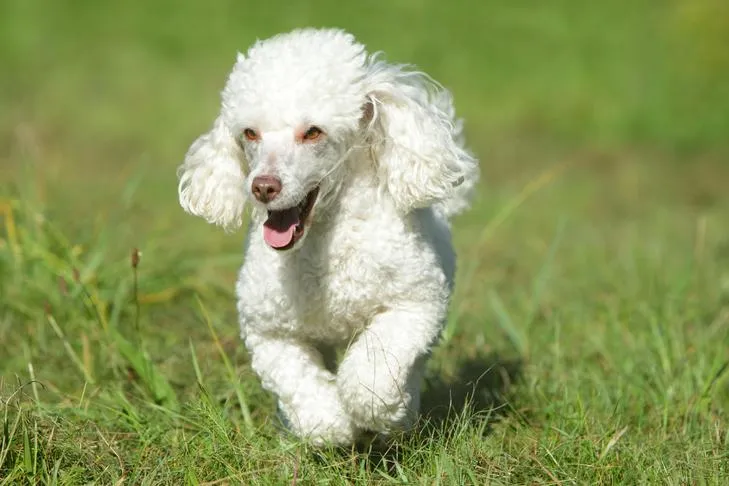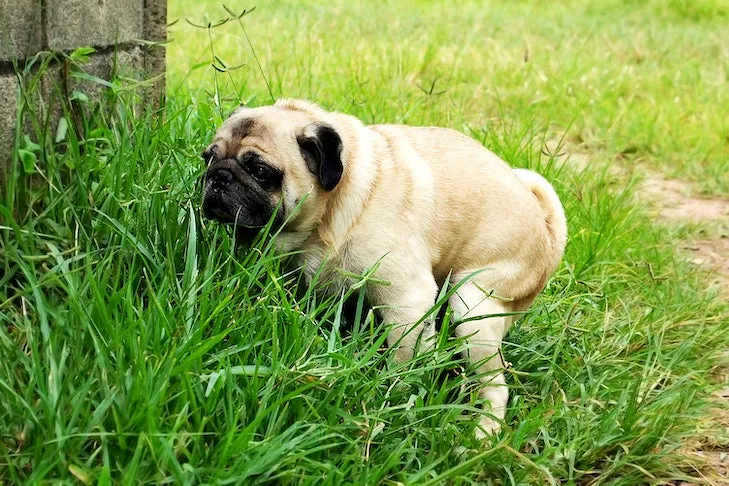For many dog owners, waiting endlessly for their furry friend to “do their business” outdoors can be a test of patience, especially in unfavorable weather conditions. While some dogs naturally take their time to find the perfect spot, teaching your dog to relieve themselves on cue is an invaluable skill that can save you time, reduce frustration, and offer greater convenience in various situations. This training not only helps you manage your dog’s potty schedule but also fosters better communication and understanding between you and your canine companion, contributing to an overall well-behaved pet. Just as important as teaching your dog where to go, addressing other behavioral traits like unwanted jumping is crucial for a harmonious household. Learning how to keep puppy from jumping on people can complement your efforts in raising a polite and obedient dog, making all training experiences more successful.
Understanding Your Dog’s Potty Habits
Dogs are creatures of habit, and their elimination routines are often influenced by environmental factors, previous training, and even their desire to prolong enjoyable outdoor time. Recognizing these patterns is the first step toward effective potty training. When your dog consistently takes an excessive amount of time to relieve themselves, it could be a sign that they are enjoying the outdoors and delaying the act, or simply haven’t learned the expected behavior on command. The goal is to make the act of going potty a clear, rewarded, and efficient process, rather than a drawn-out negotiation. By understanding your dog’s natural inclinations, you can create a positive and predictable training environment that encourages prompt outdoor elimination.
Choosing the Right Cues for Outdoor Elimination
To effectively communicate your expectations, establishing clear and distinct verbal cues for peeing and pooping is essential. While straightforward commands like “pee” and “poop” are common, you can choose any words that are comfortable for you to use consistently. Some owners prefer more subtle cues such as “showtime” or “business.” Having separate cues helps your dog differentiate between the two actions, making the training process more precise. The key is consistency: once you select your cues, use them every time you want your dog to perform the specific behavior. This clarity helps your dog quickly associate the command with the desired action, paving the way for successful outdoor potty training.
 A happy Toy Poodle running through lush green grass on a sunny day.
A happy Toy Poodle running through lush green grass on a sunny day.
Step-by-Step Guide to Training Your Dog to Poop Outside
Teaching your dog to poop outside on cue leverages a training method known as “capturing,” where you label and reward a behavior your dog is already performing. This makes the process intuitive, as you are simply adding a verbal command to an existing action. Patience and a generous supply of high-value treats are crucial during this phase, mirroring the dedication often required when you first how to train your puppy to stop jumping on guests.
- Anticipate Potty Time: Take your dog out when you know they are likely to need to go, such as after waking up, eating, or playing. Always have treats ready.
- Observe Quietly: As your dog searches for a spot to eliminate, refrain from speaking or distracting them.
- Prepare to Cue: The moment your dog begins the act of peeing or pooping, get ready to introduce your chosen cue, praise them, and offer a treat.
- Cue During Elimination: As your dog is finishing, introduce your verbal cue (e.g., “poop” or “business”) coupled with praise or a click (if clicker training). It’s important to use the cue only when they are actively going, and waiting until they are nearly done can prevent them from stopping prematurely.
- Reinforce the Association: Once your dog starts to understand, begin saying your cue just as they initiate the behavior—for example, as they squat. Follow immediately with enthusiastic praise and a treat when they finish.
- Test the Cue: After consistent practice over several days or weeks, take your dog to a quiet, familiar outdoor spot and give your cue. When they successfully eliminate, reward them generously with praise and treats.
Ensuring Consistency in Your Outdoor Potty Training
Consistency is the cornerstone of any successful dog training endeavor, and teaching your dog to poop outside on cue is no exception. It is vital to consistently pair your chosen verbal cue with the act of elimination and an immediate reward. Keeping a stash of treats by your door can simplify this process, ensuring you’re always prepared for training opportunities. This unwavering routine helps solidify the association in your dog’s mind, making the behavior reliable. Over time, your dog will begin to “try” to eliminate upon hearing the cue, even if they don’t have a full bladder or bowel. Rewarding these efforts, such as a quick squat or leg lift, reinforces their understanding and commitment to the cue. This consistent reinforcement not only helps with potty training but also builds a strong foundation for managing other behaviors like learning how to keep a puppy from jumping on you when they greet you.
 A Pug in tall grass, in the process of pooping outdoors.
A Pug in tall grass, in the process of pooping outdoors.
Making Outdoor Potty Time Enjoyable and Rewarding
While the primary motivation for teaching your dog to potty on cue is often convenience, it’s essential to remember that for your dog, being outside is an enriching experience. If going potty immediately signals a return indoors, your dog might associate the cue with the end of fun, leading to reluctance. Therefore, ensure that potty time remains a positive experience. Continue to use treats and praise, but also incorporate environmental rewards. After your dog has successfully eliminated, allow them a few extra minutes to sniff around, continue your walk, or even play with a toy. This helps prevent negative associations and reinforces that responding to the cue leads to even more enjoyable outdoor time, rather than its abrupt conclusion. This approach to positive reinforcement is key to any training, whether you’re focusing on outdoor elimination or trying to understand how to stop a puppy jumping on furniture.
Generalizing Potty Training Across Different Locations
Dogs are situational learners, meaning a skill learned in one environment might not automatically transfer to another. To ensure your dog is reliable with their “potty on cue” command, it’s crucial to practice in a variety of locations. Start with familiar, low-distraction areas like your backyard or a quiet sidewalk near your home. As your dog becomes more proficient, gradually introduce new environments such as parks, different neighborhoods, or even unfamiliar grassy areas. This diversification of training sites helps your dog generalize the skill, understanding that the cue means “go potty” regardless of where they are. This adaptability is particularly useful when traveling, visiting friends, or in emergency situations that might require them to relieve themselves in an unusual spot. Just as you train for diverse environments with potty cues, ensuring your puppy doesn’t jump up on people in different settings also requires varied practice. Understanding how to keep a puppy from jumping up in various social situations reinforces good manners everywhere.
 Close-up of a hand scooping dog waste from grass into a bag.
Close-up of a hand scooping dog waste from grass into a bag.
Teaching your dog to poop outside on cue is a practical skill that enhances convenience for you and provides clear communication for your dog. By implementing a consistent, positive reinforcement-based training approach, selecting clear cues, and practicing in diverse environments, you can transform outdoor potty breaks into efficient and predictable routines. Remember, patience and consistency are your most valuable tools in this process, leading to a more harmonious life with your well-trained canine companion.
